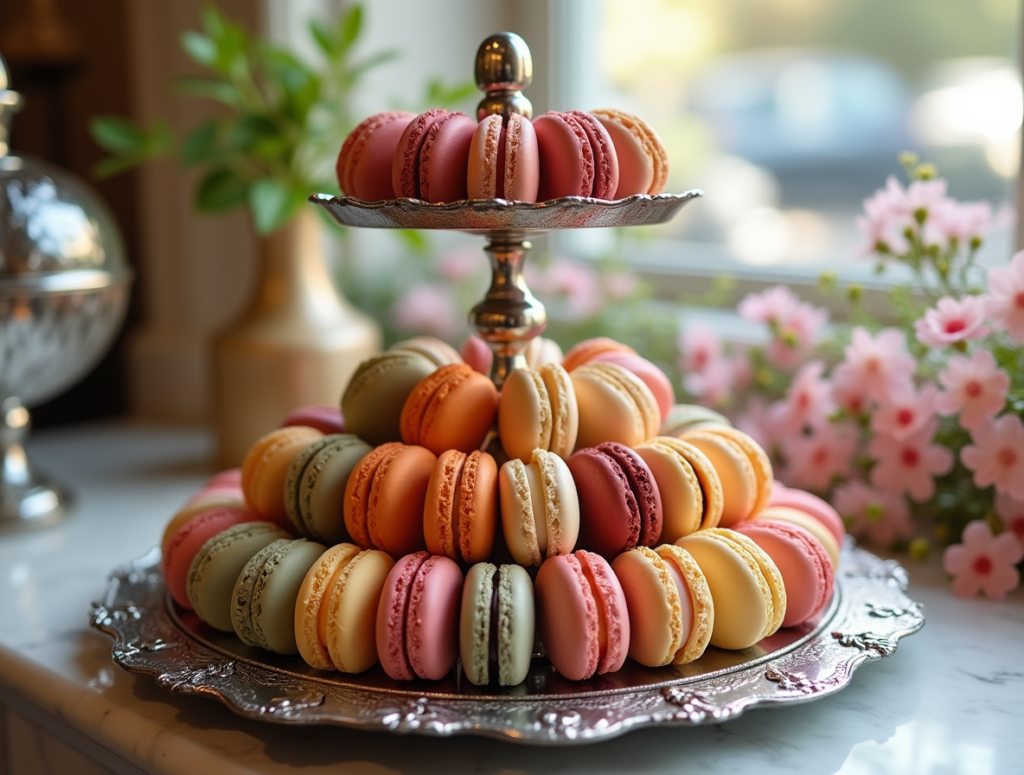
Dating back to the French Renaissance, macarons have evolved from simple almond cookies to the sophisticated sandwich cookies we know today. The modern macaron, with its distinctive smooth shell and ruffled feet, was perfected in the early 20th century by French patisseries.
| Ingredient | Amount |
|---|---|
| Almond Flour | 100g |
| Powdered Sugar | 100g |
| Egg Whites | 70g |
| Granulated Sugar | 70g |
| Gel Food Coloring | As needed |
| Ingredient | Amount |
|---|---|
| Almond Flour | 200g |
| Powdered Sugar | 200g |
| Egg Whites | 140g |
| Granulated Sugar | 140g |
| Gel Food Coloring | As needed |
| Ingredient | Amount |
|---|---|
| Almond Flour | 300g |
| Powdered Sugar | 300g |
| Egg Whites | 210g |
| Granulated Sugar | 210g |
| Gel Food Coloring | As needed |
Understanding the chemistry of macarons helps achieve consistent results. The meringue structure, protein networks, and moisture balance all play crucial roles. The resting period allows a skin to form, which helps create the signature feet during baking.
| Nutrient | Amount |
|---|---|
| Calories | 85 |
| Protein | 2g |
| Carbohydrates | 15g |
| Fat | 3g |
| Fiber | 0.5g |
Hollow shells usually result from incorrect oven temperature or undermixed batter. Ensure proper temperature and master the macaronage technique.
Until a skin forms when gently touched, typically 30-60 minutes depending on humidity. In humid conditions, it may take longer.
While possible, it’s more challenging. Use a dehumidifier and extend resting time if necessary.
No feet usually indicates either insufficient resting time or improper oven temperature. Ensure a skin forms before baking and check oven calibration.
Share your macaron creations using #PerfectMacarons – and remember, mastering macarons takes practice, patience, and precision! 🇫🇷✨